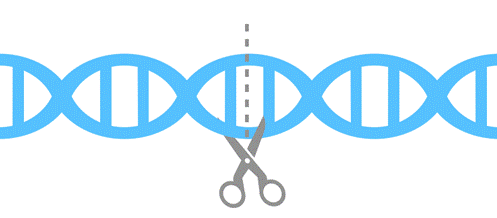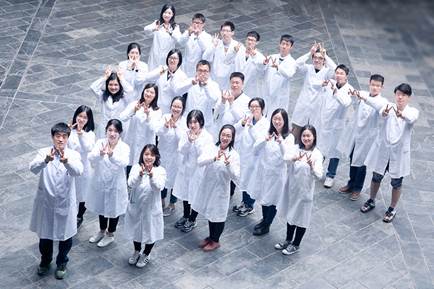Peking University, May 22, 2018:
We are all too familiar with Microsoft Word processor, a most handy tool to edit a textual document; but what if we want to edit a gene?

Genome-editing tool is like a scissor that cut DNA helices apart
Dr. Wei Wensheng, Professor of School of Life Sciences, affiliated also to CLS (Peking-Tsinghua Center for Life Sciences), BIOPIC (Biodynamics Optical Imaging Center), and ICG (Beijing Advanced Innovation Center for Genomics), specializes as a scholar on the development of various genome editing tools and is devoted to their application in investigating gene functions, which are central in cancer or microbial infections.
Similar to a file constituted by binary codes in the computer, a gene is constituted by quaternary genetic codes (A, T, C, G) inside the cell. Genes determine our hair color, facial characteristics, as well as susceptibility to certain diseases. They are usually conserved and inherited, and cells have developed a complicated system to protect them from mutation. However, in some occasions, there is an urgent need to mutate the gene in order to verify a hypothesis or cure a disease.
In basic research, sometimes researchers develop a hypothesis about the mechanism of a cellular function, like gene A’s expression promotes gene B’s expression level, but inhibits protein C’s activity. In this case, researchers shut down gene A’s expression and observe what happens to gene B and protein C. To shut down gene expression, gene-editing tools are needed to delete the genetic codes of this gene.
In clinical treatment, from time to time, people hope to modify gene expression or shut down a certain gene in order to cure a disease. For example, the HIV virus gets into the cell via CCR5 protein on the cell membrane. Knocking down CCR5’s expression on cell surface drastically decreases infection of this virus. Genome-editing therapy that mutates CCR5 gene in cells has been a promising cure in human’s battle with AIDS.
Given the importance of genome-editing in both basic research and clinical treatment, the past decade has witnessed many achievements on genome editing attained by Wei's research group. Starting from decoding the recognition sites of an important gene-editing protein TALE in 2014, developing high-throughput screening tool in human cells for functionally characterizing genes on a large scale (published in Nature, 2014), to establishing the first high-throughput screening strategy to study long non-coding RNAs (published in Nature Biotechnology, 2016), Wei’s group has been upgrading and enriching the puissance of gene-editing tools, which will inarguably help dissect gene functions and mechanisms, thus contributing to the development of pharmaceutical research and clinical therapy.

Photo of Wei Group (Source: http://weilab.pku.edu.cn/index.htm)
To convert the pioneering technique to more industrialized application, Wei has founded a start-up company, EdiGene Inc., located in Zhongguancun Life Sciences Park in the suburb of Beijing. The Park has been a central hub for many biotech companies as well as pharmaceutical giants. The main goal of EdiGene Inc. is to marketize genome editing and high-throughput functional screening services, which brings us a step closer to the world's most advanced gene-editing techniques.
In April 2018, EdiGene Inc. was selected as one of the most noteworthy startups in 2017 by Nature Biotechnology. In this featuring article, "Nature Biotechnology's academic spinouts of 2017", EdiGene was the only one from Asia among the 10 biotechnology companies being introduced. "The company is still at an early stage," Wei said, "The series of high-throughput technologies can change the model of drug discovery, help us understand drug resistance. It could be a huge advantage over conventional drug discovery".
Reference:
Nature Biotechnology's academic spinouts of 2017 https://www.nature.com/articles/nbt.4121
Reported by: Feng Shasha
Edited by: Ma Xiao

